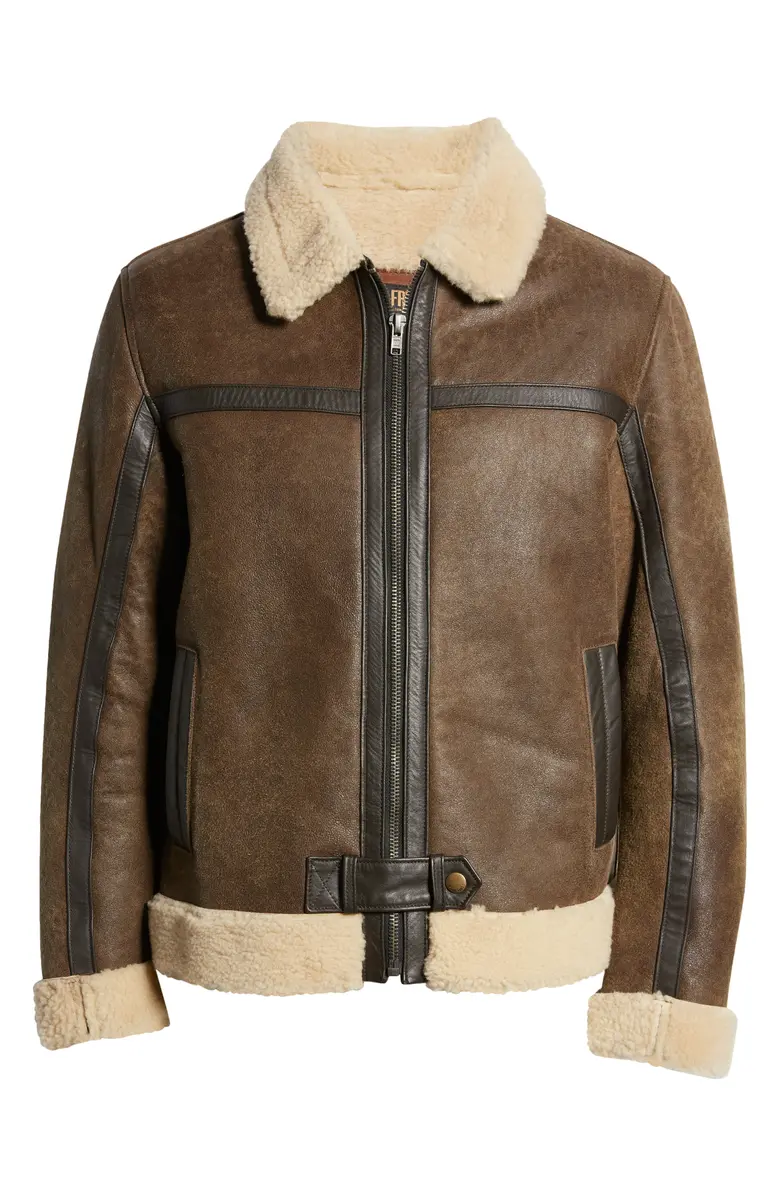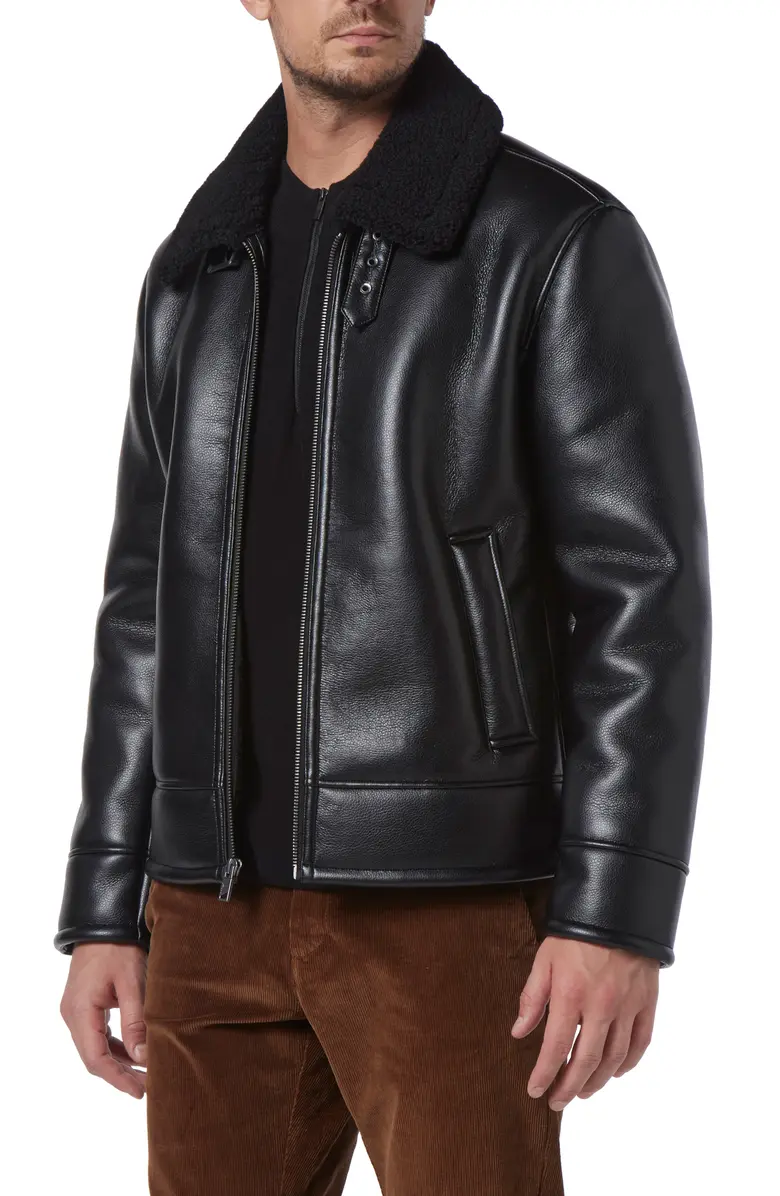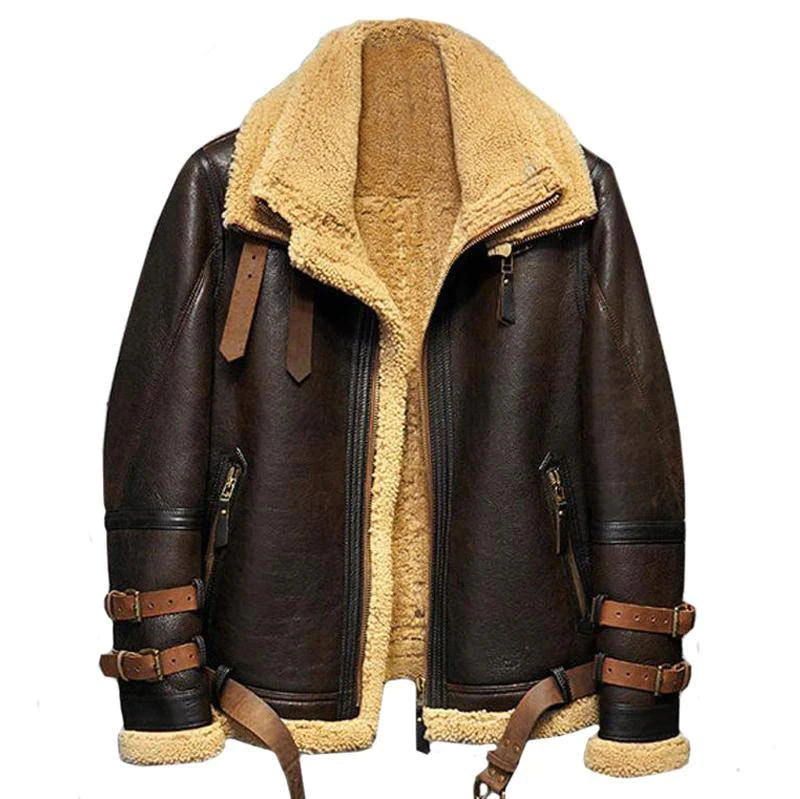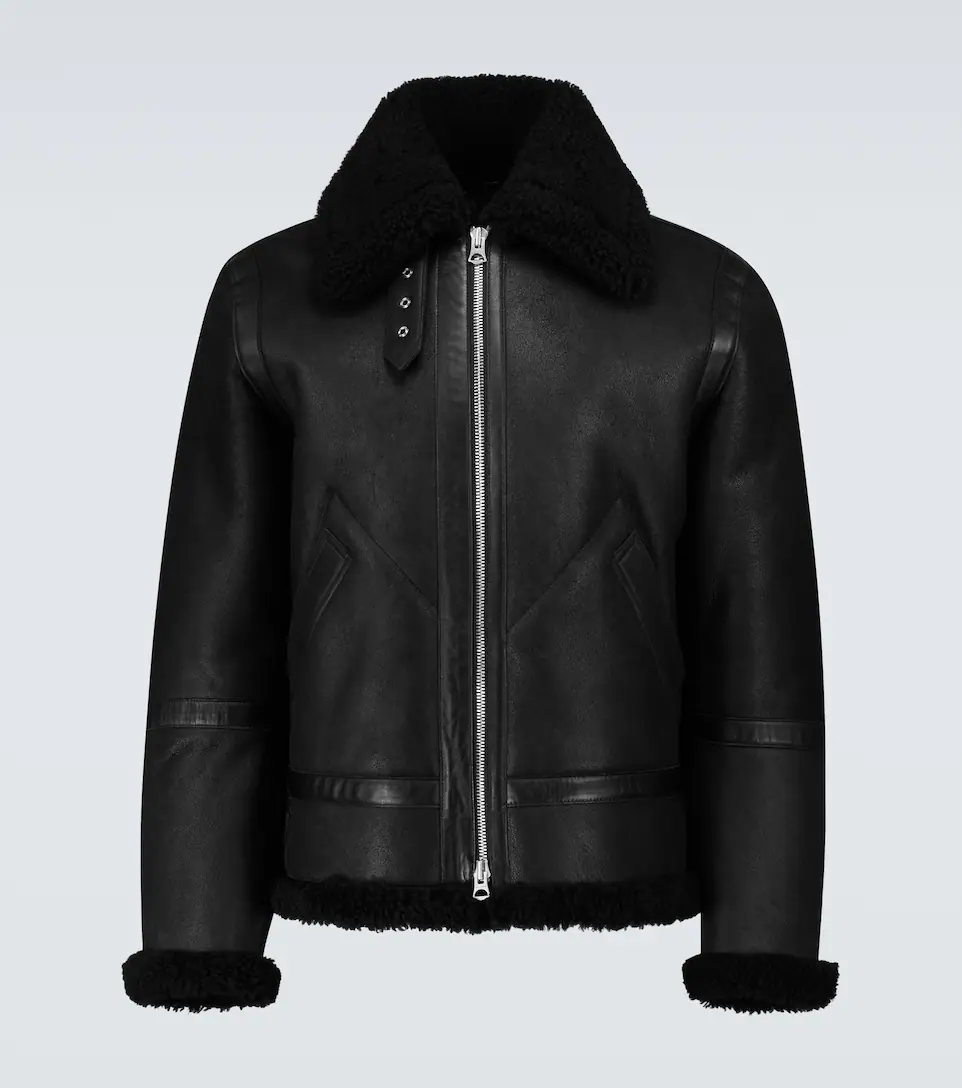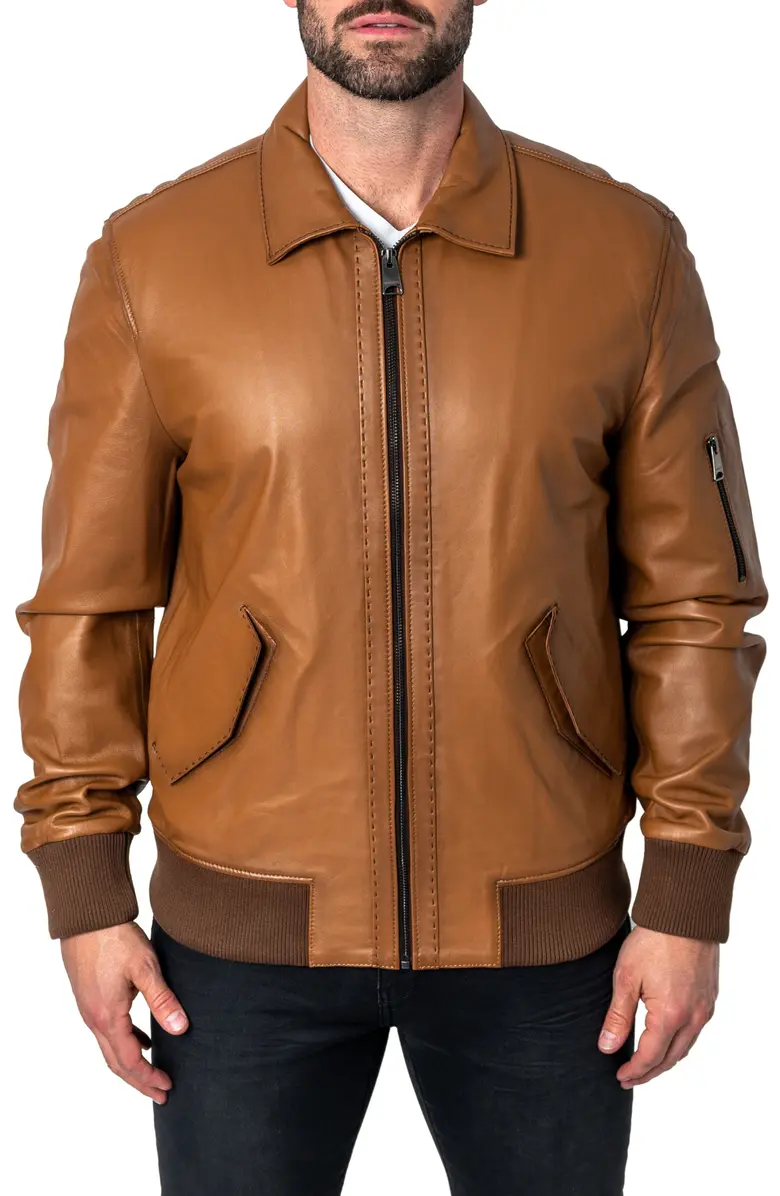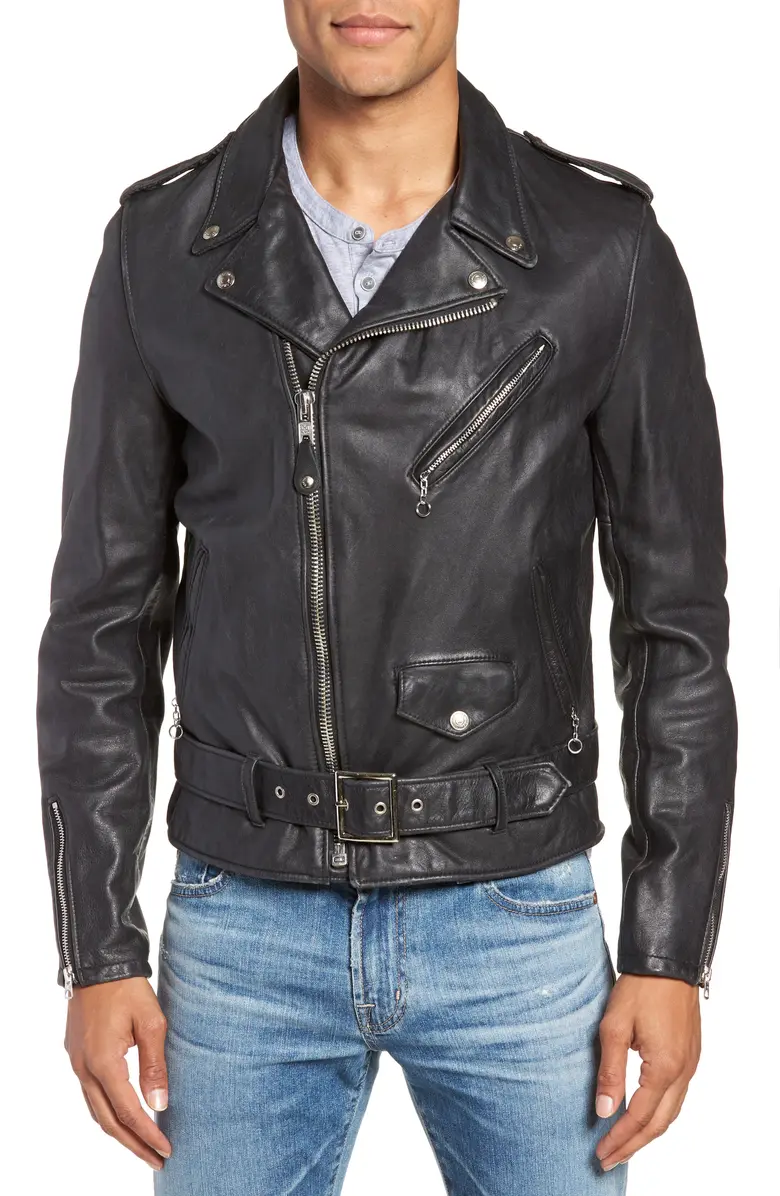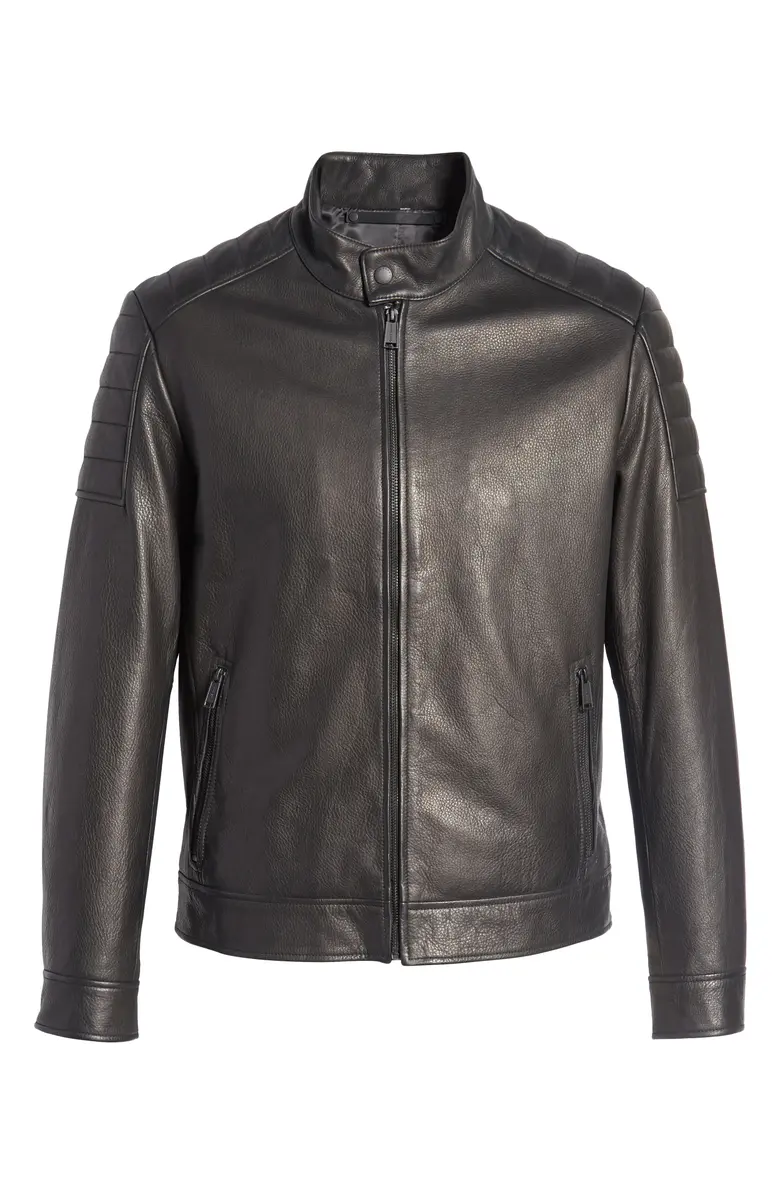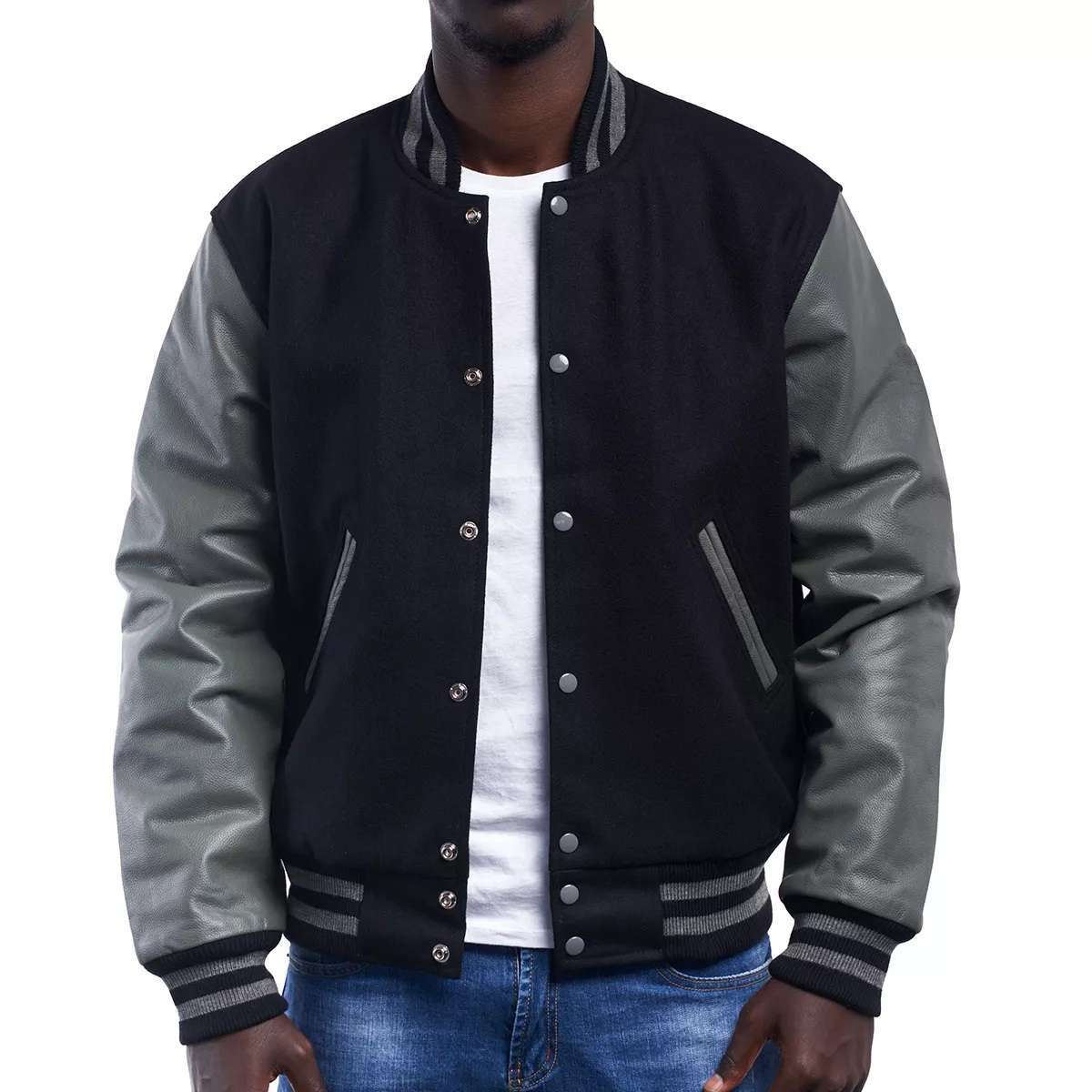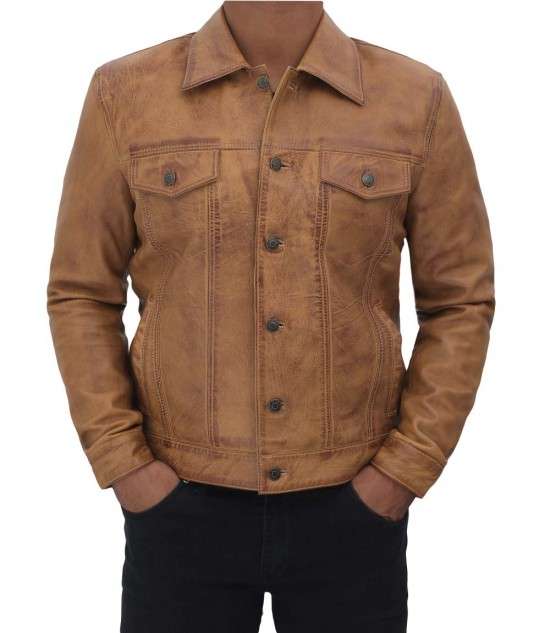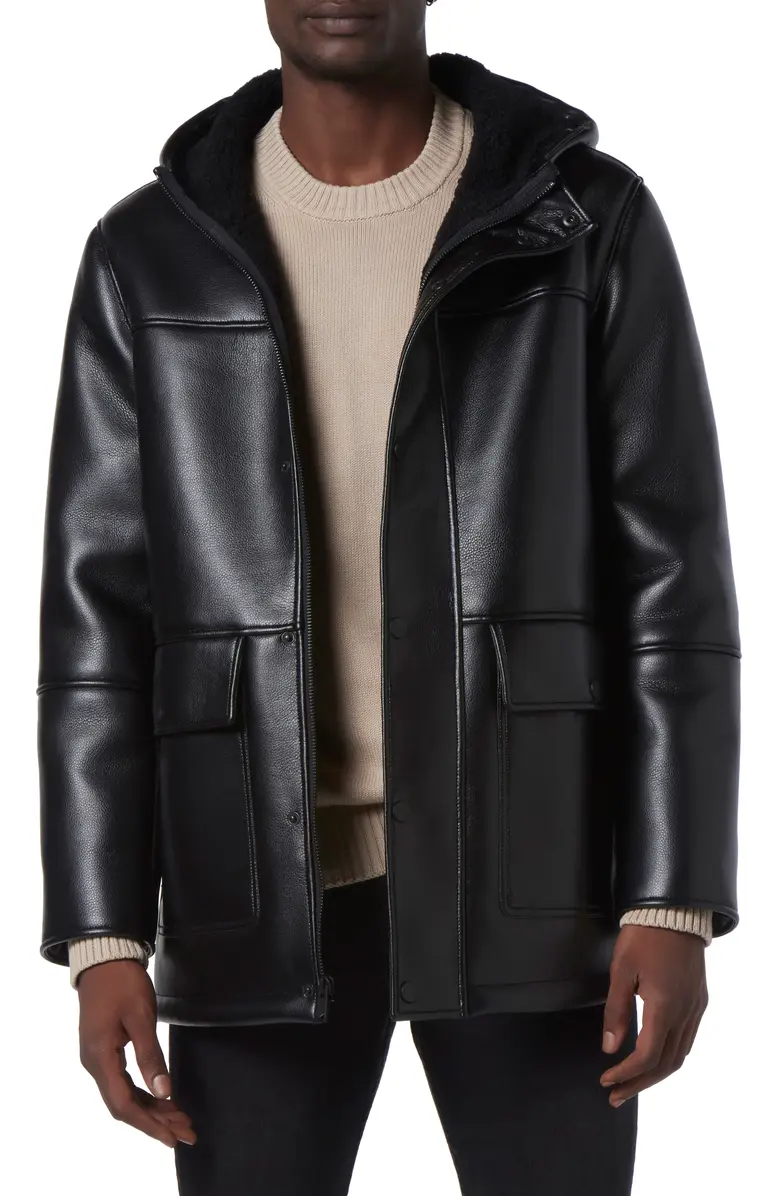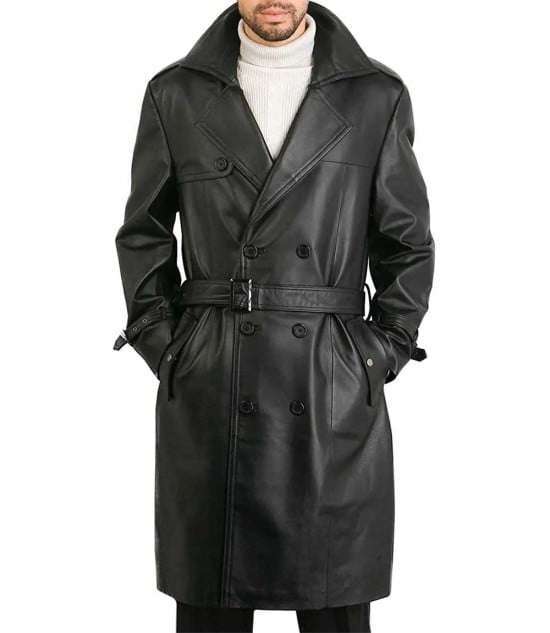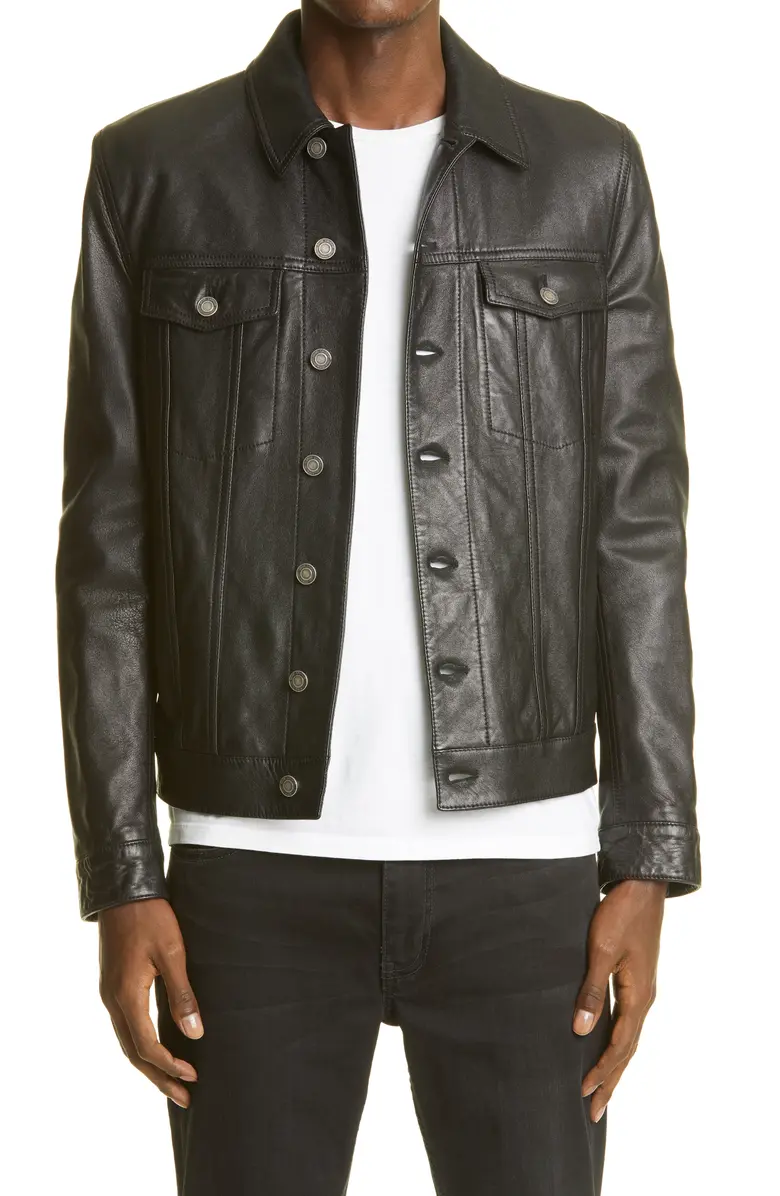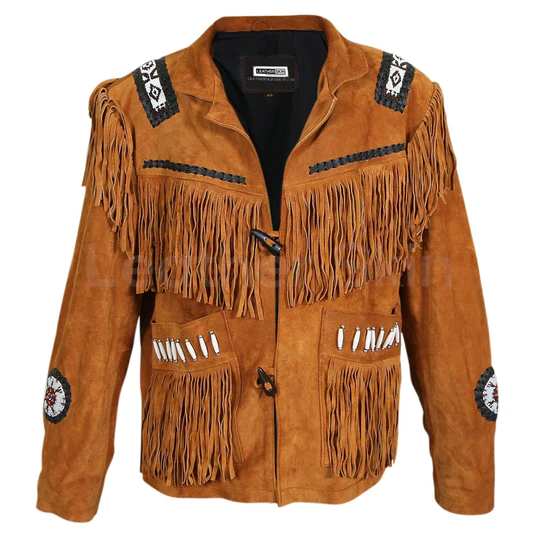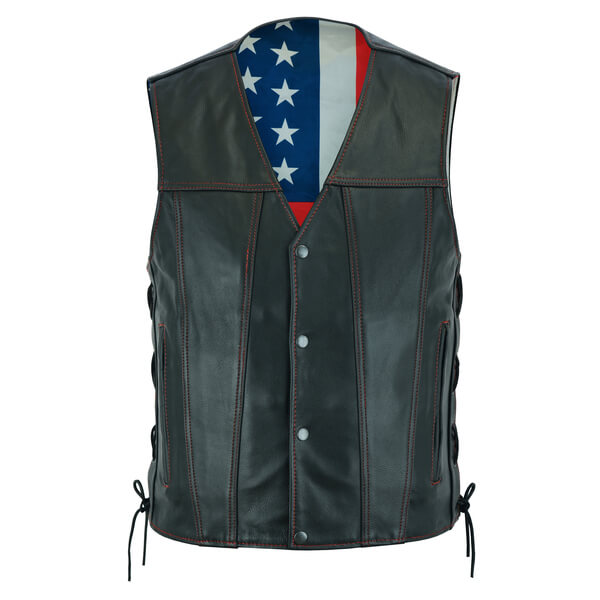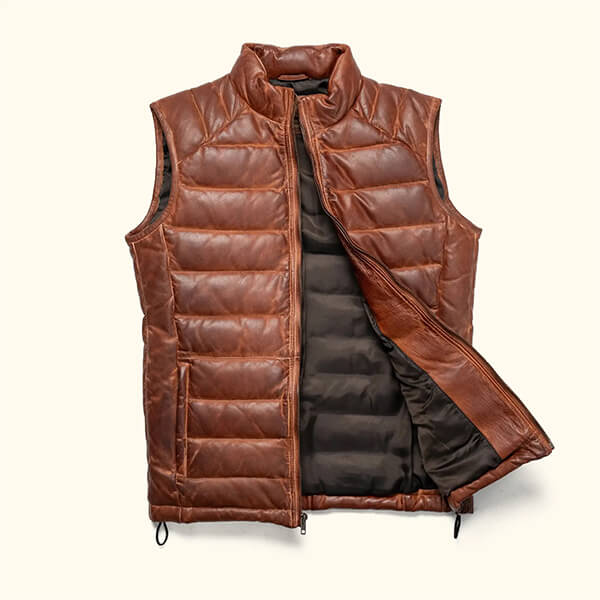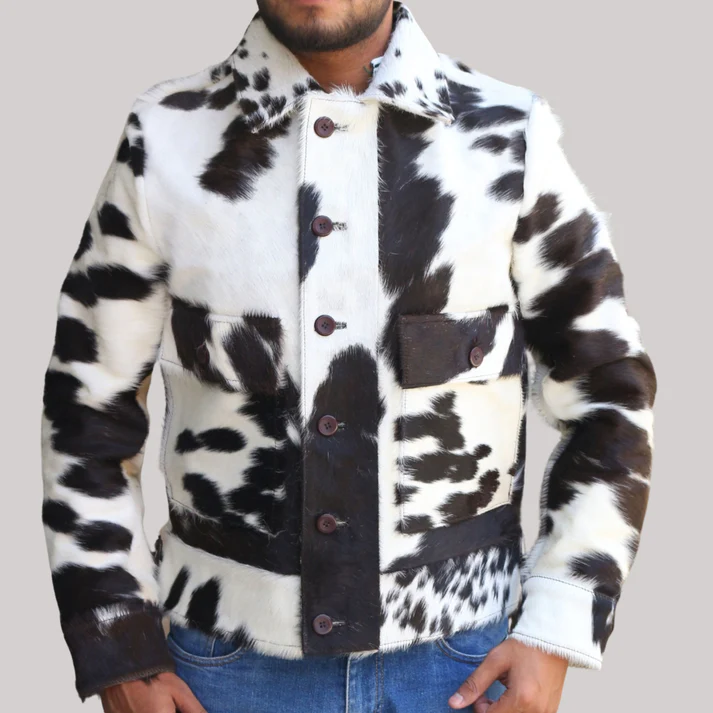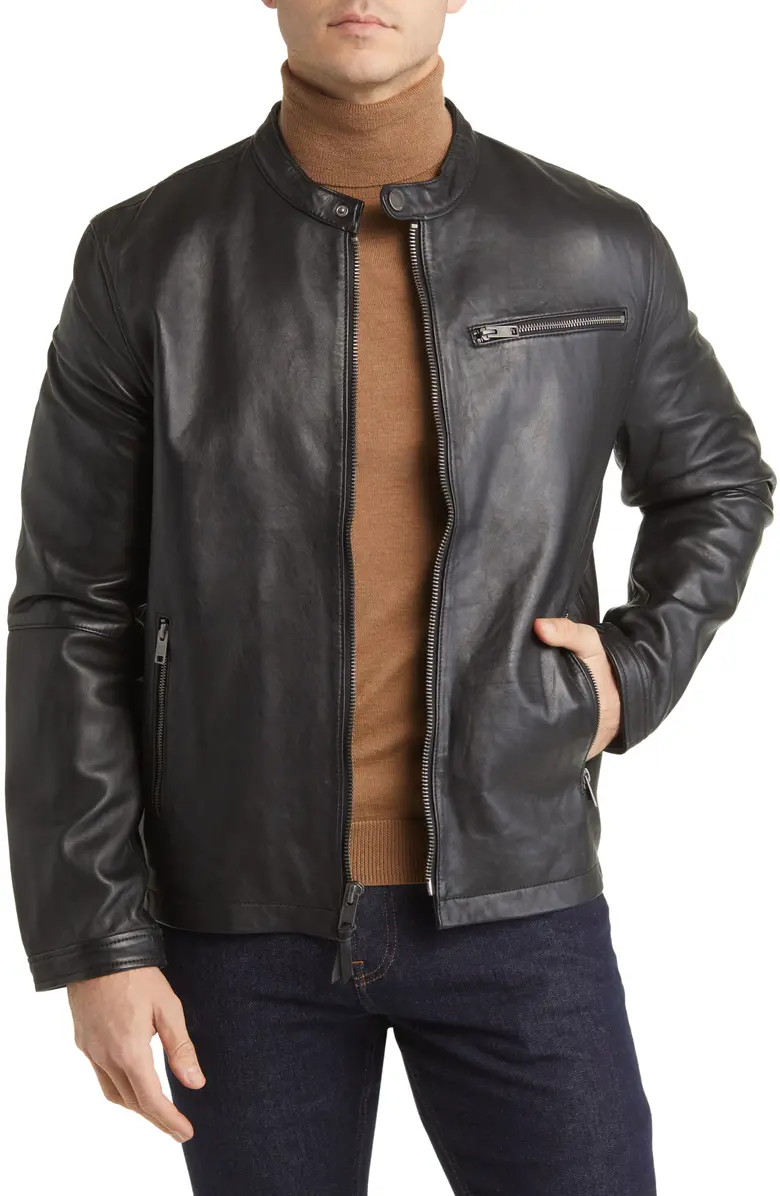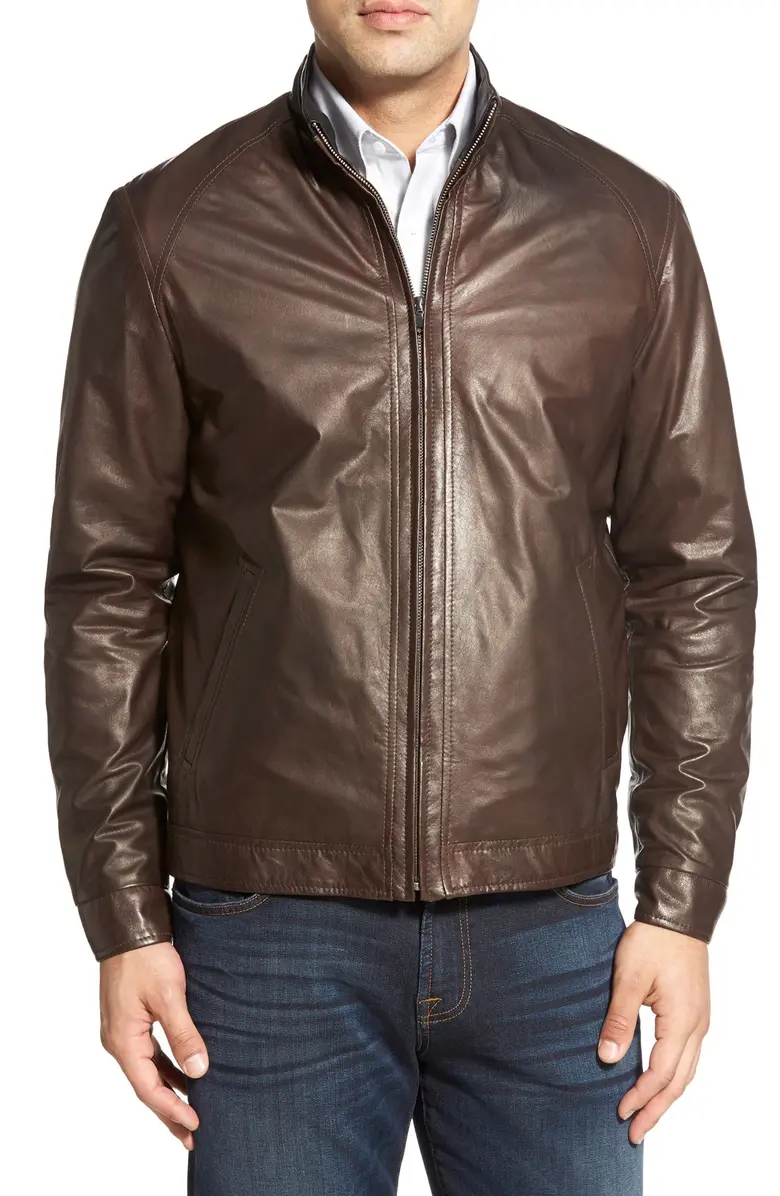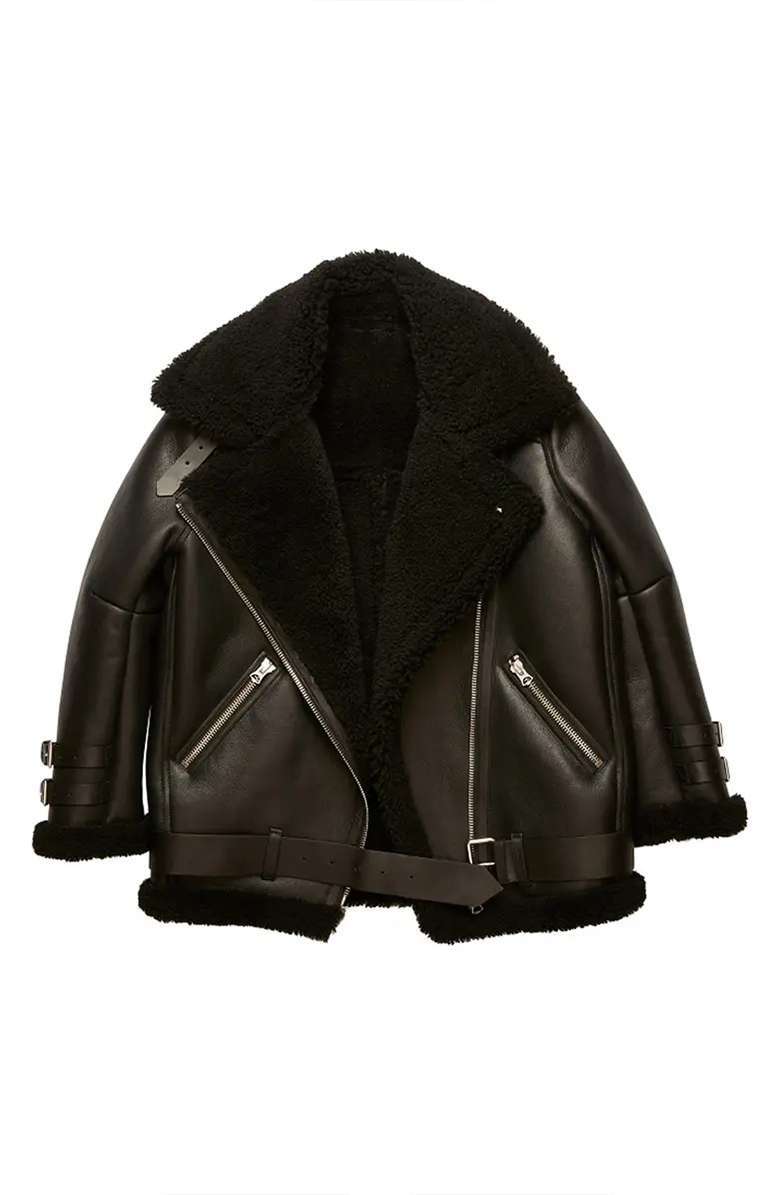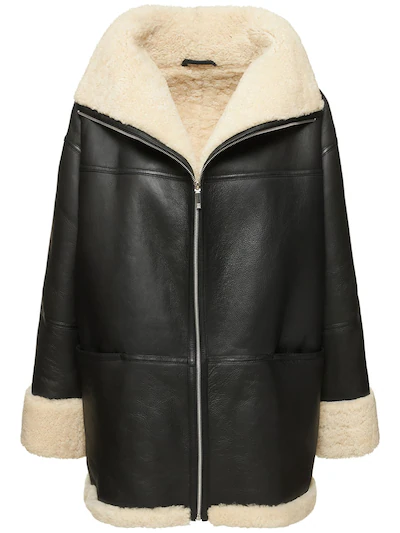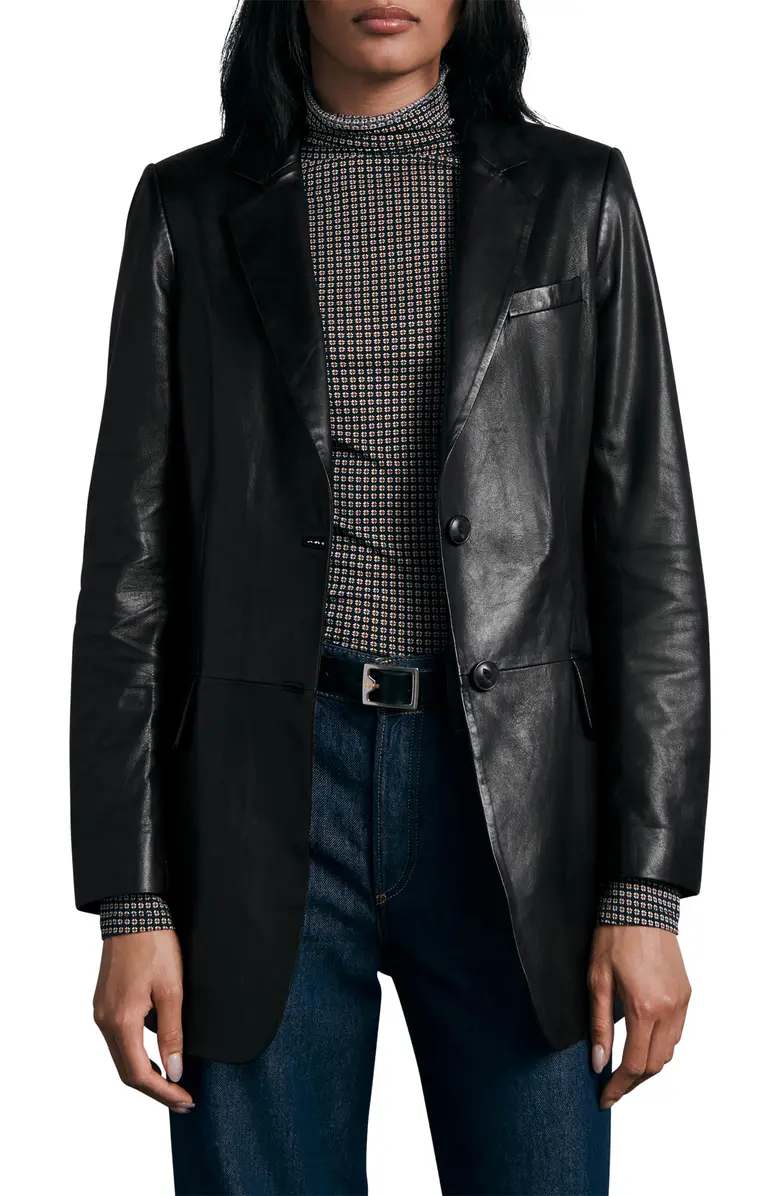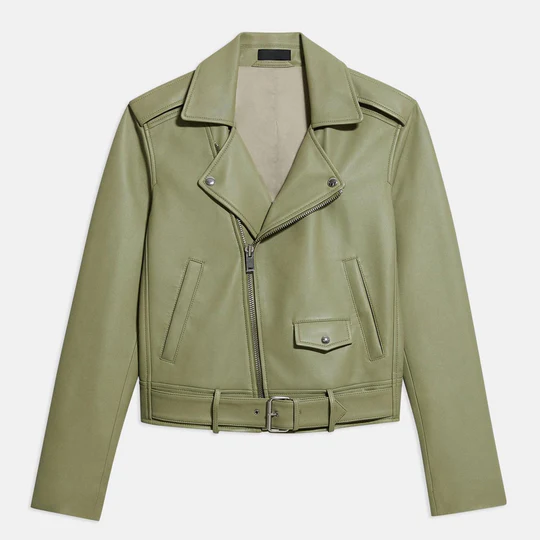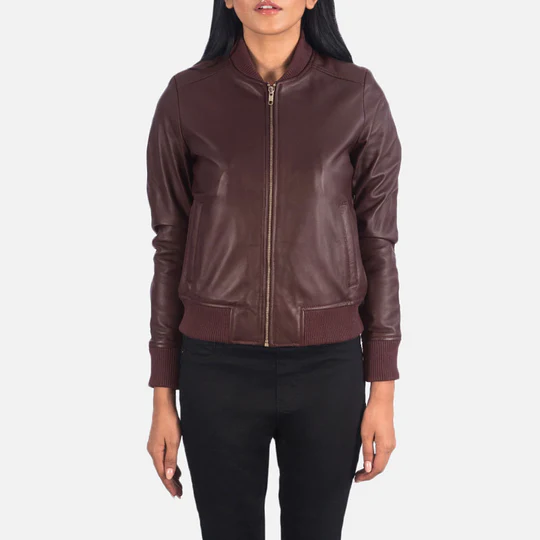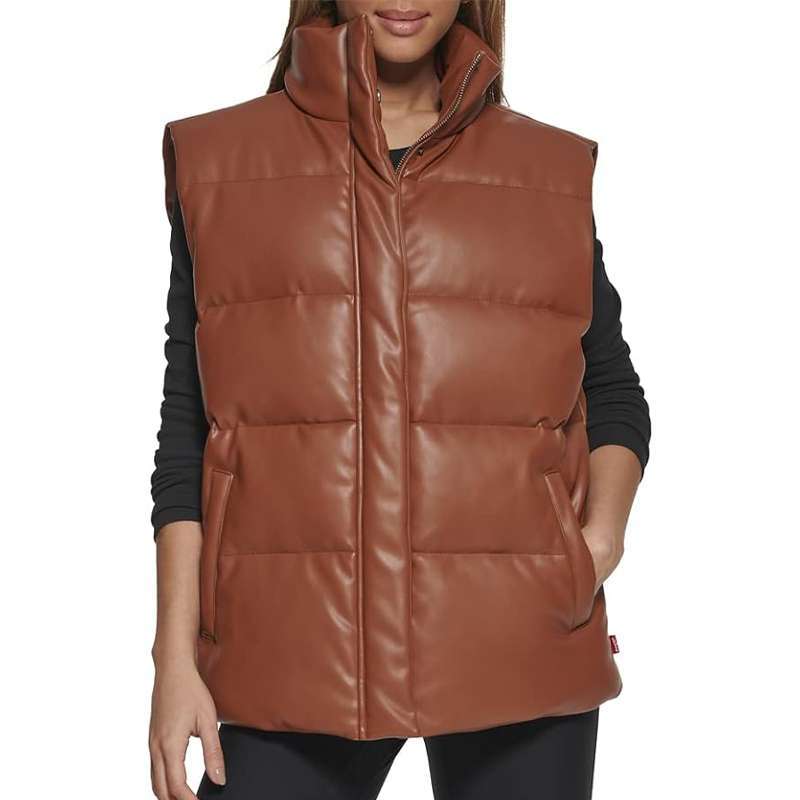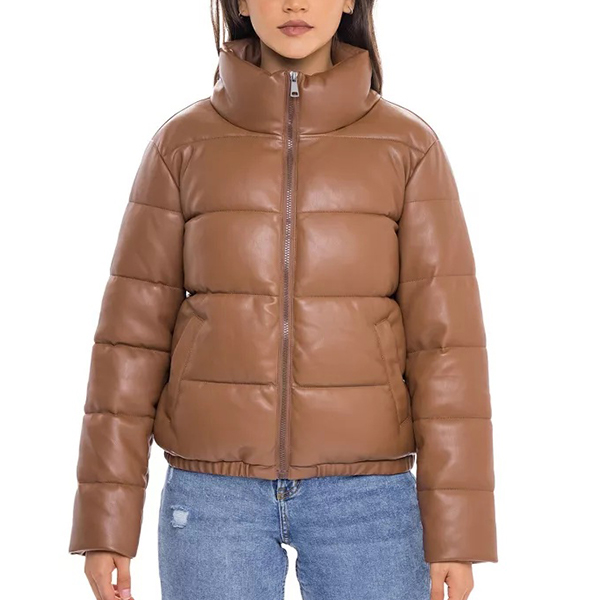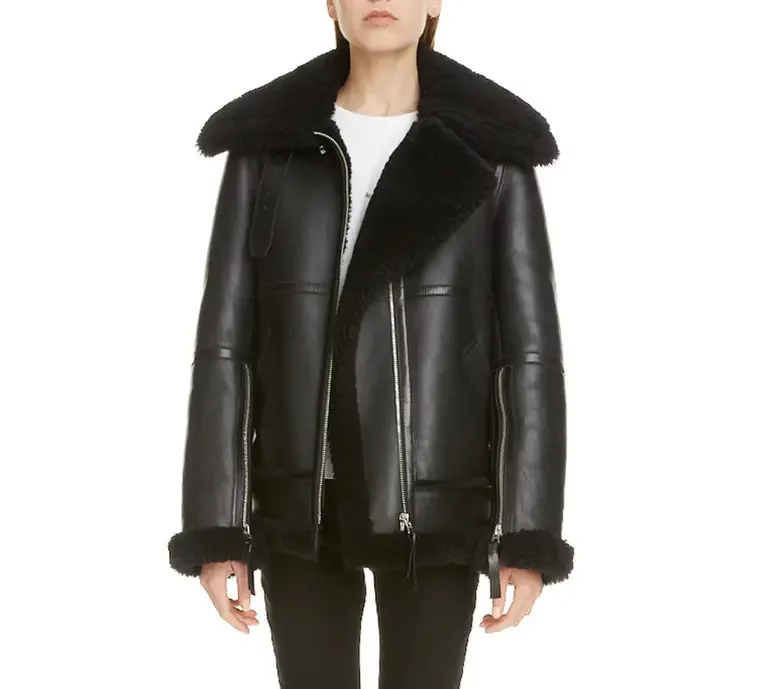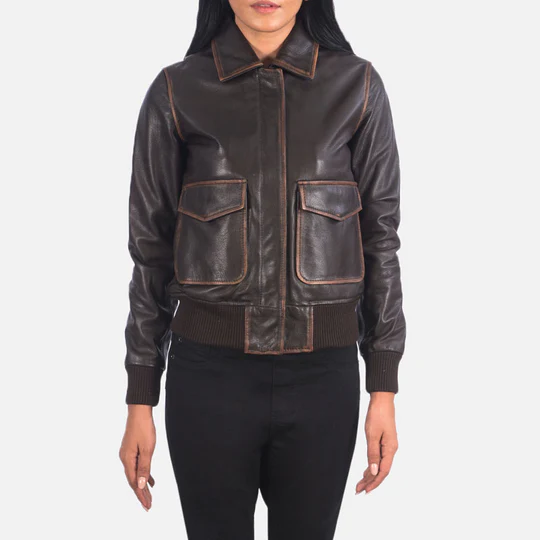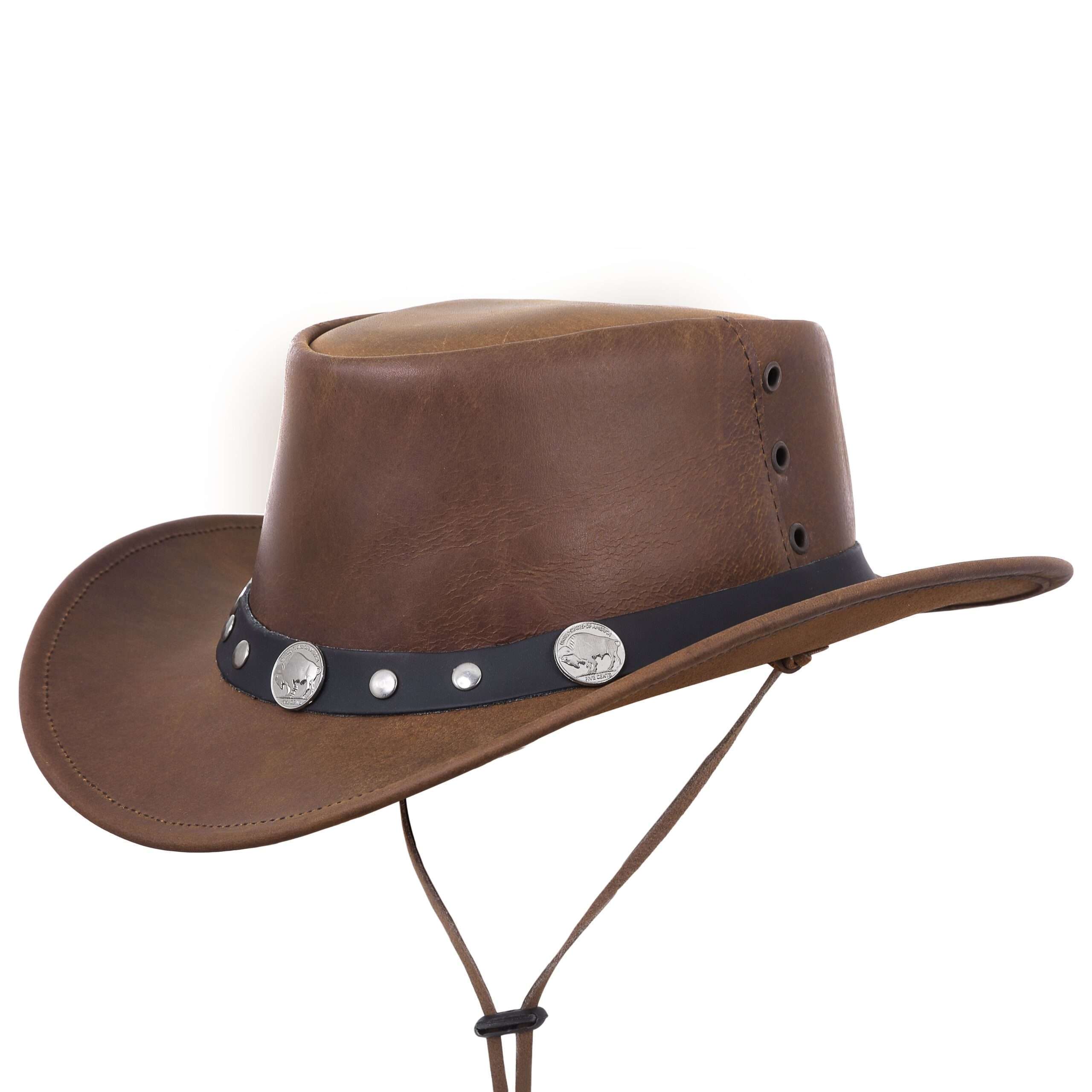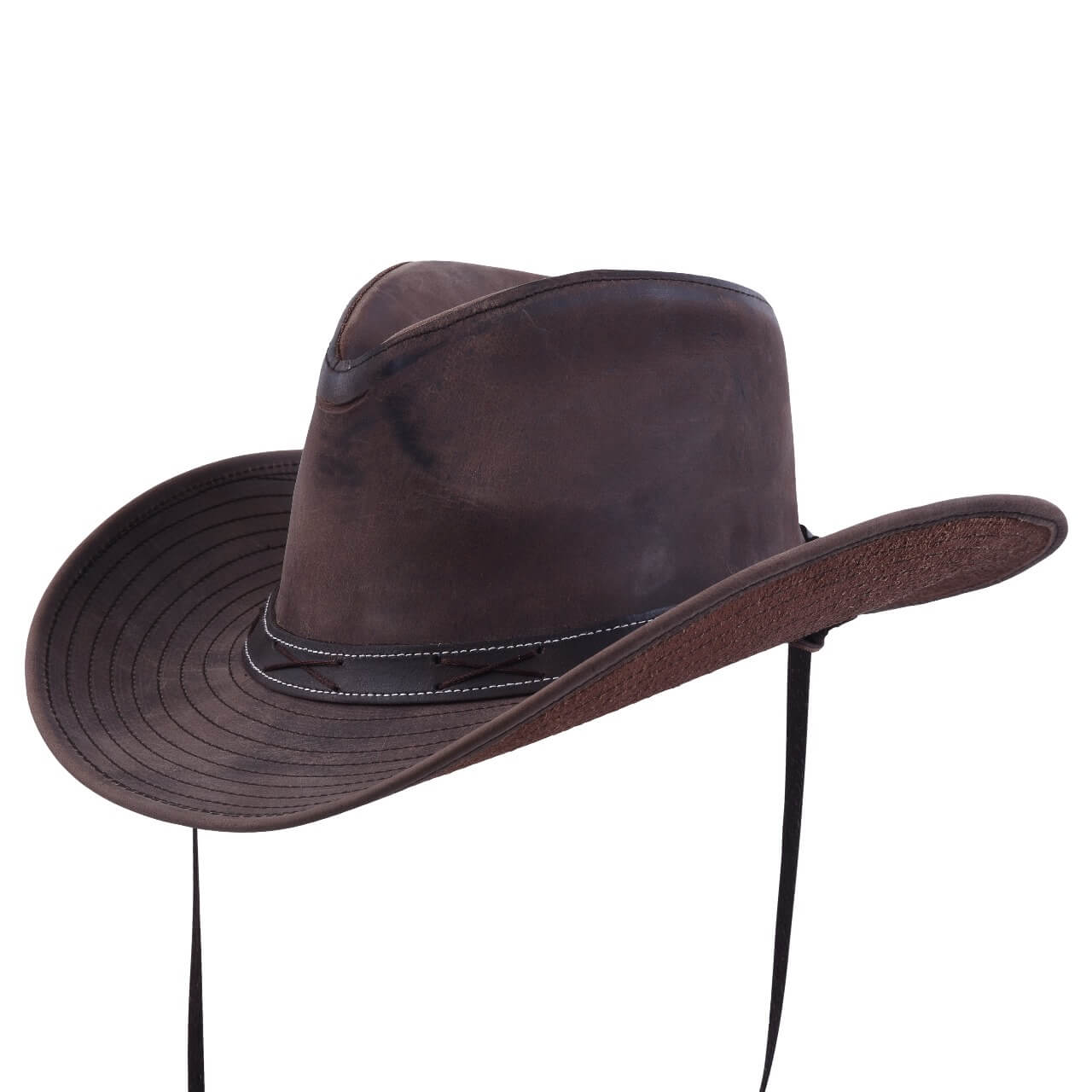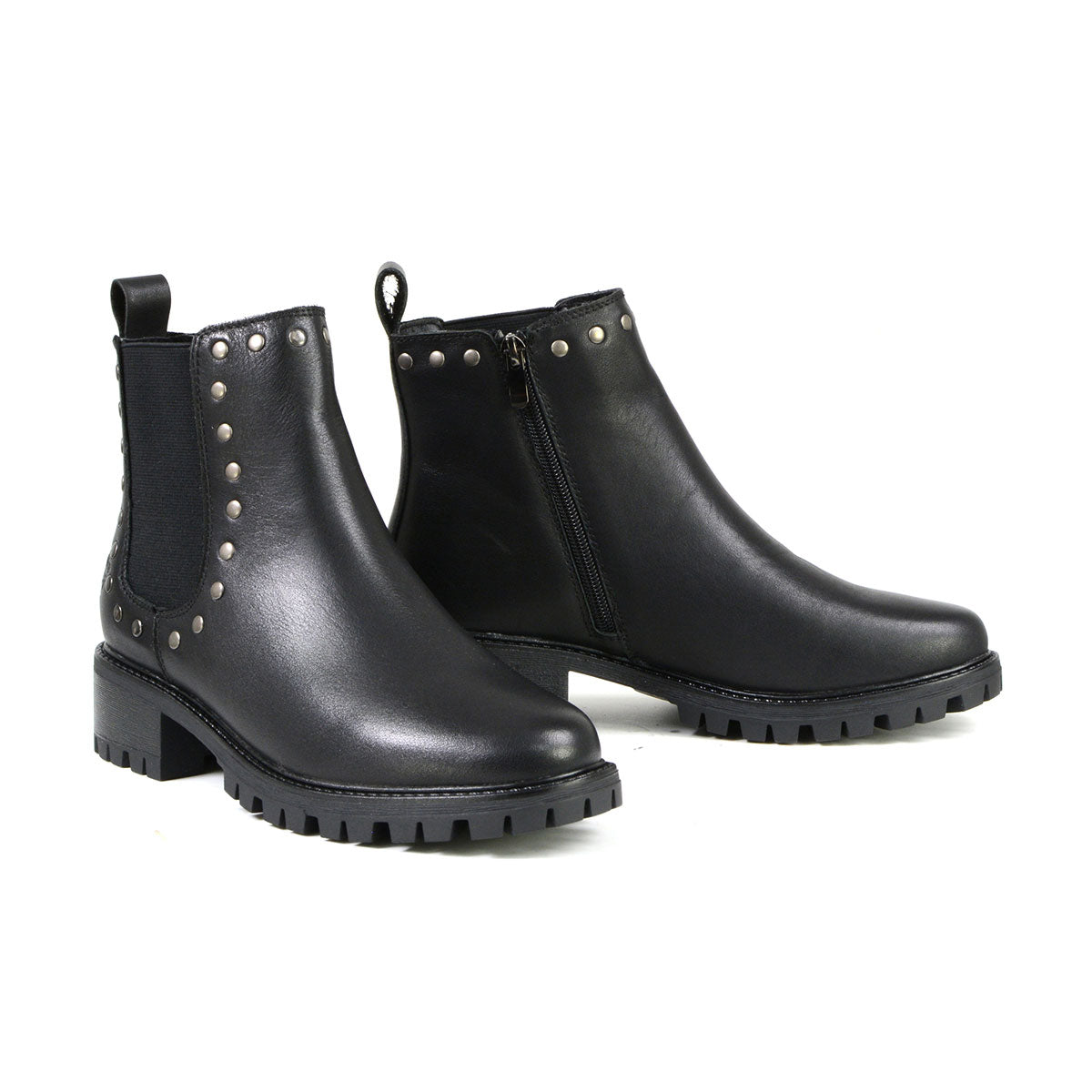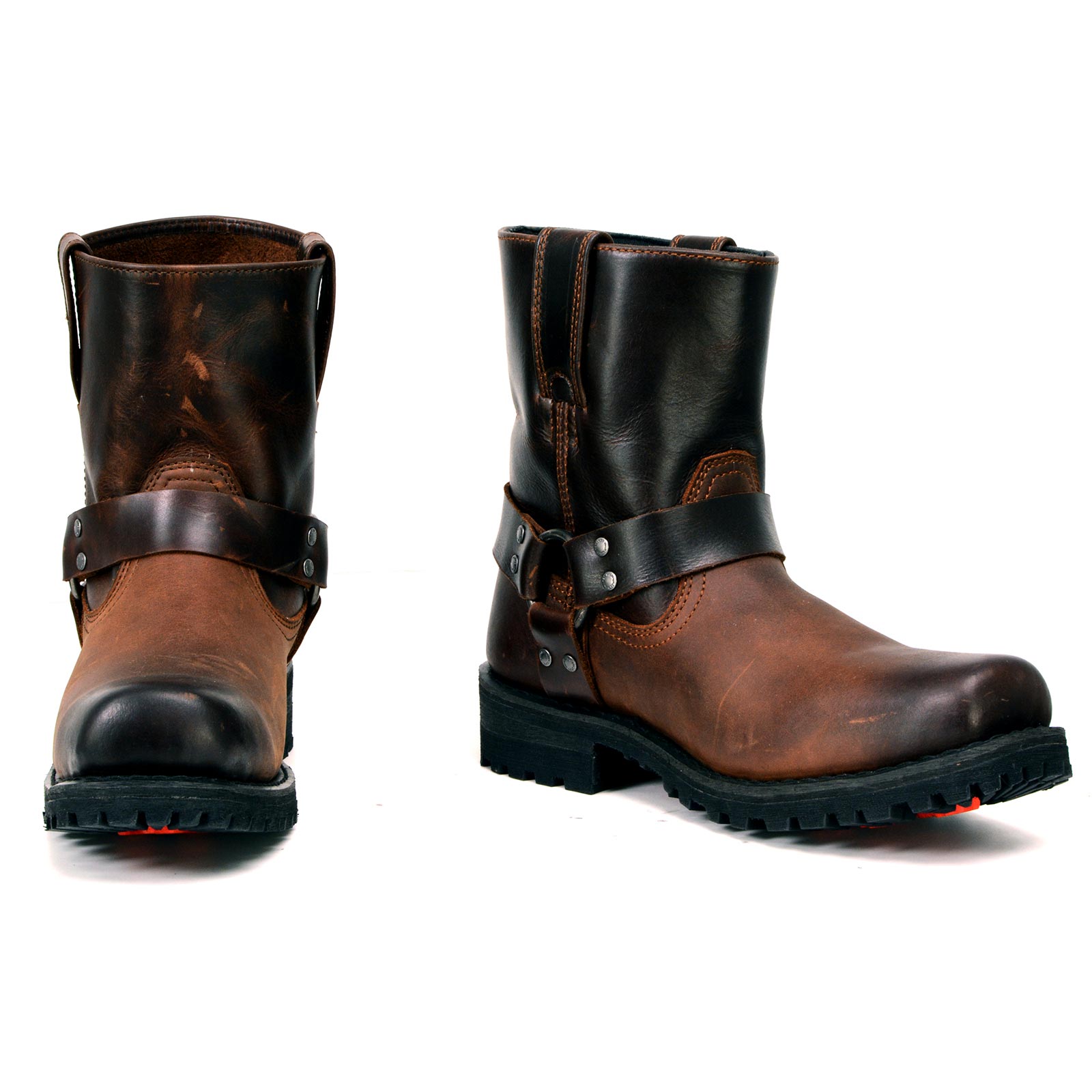Sherpa lined leather jackets have become a fashion staple, adorning the backs of trendsetters and fashion enthusiasts around the globe. With their rugged yet luxurious appearance, these jackets effortlessly blend style and functionality, making them a must-have item in any wardrobe.
What is a Sherpa Lined Leather Jacket?
A sherpa lined leather jacket is a stylish and functional piece of outerwear that combines the rugged appeal of leather with the luxurious warmth of sherpa lining. This unique fusion of materials creates a garment that not only exudes timeless style but also provides exceptional comfort, especially in colder weather.The jacket typically features a leather exterior that is known for its durability, versatility, and classic charm. The interior is lined with sherpa, a soft and cozy material often made from synthetic fibers or natural wool. The result is a jacket that not only makes a fashion statement but also keeps you snug and cozy when temperatures drop.
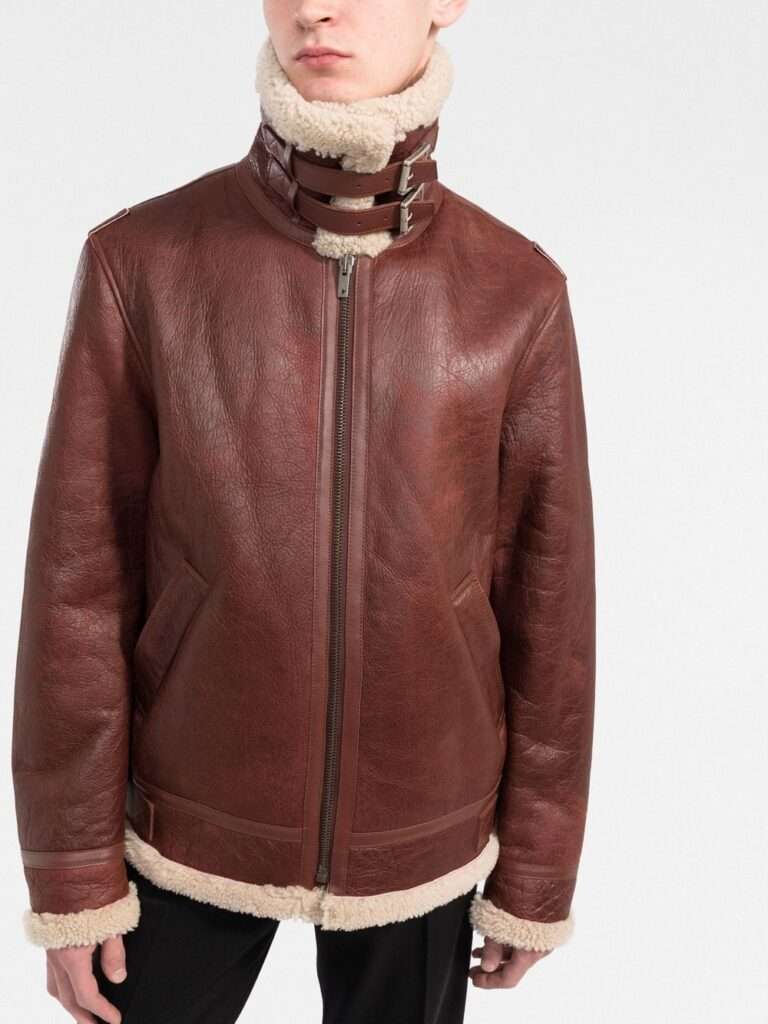
Brown Sherpa Leather Flight Aviator Jacket
History and Origin of Sherpa Lining in Clothing
The origin of sherpa lining can be traced back to the Himalayan region, where the indigenous Sherpa people used sheepskin-lined garments to protect themselves from the harsh mountain climate. The use of sherpa lining in clothing was primarily driven by the need for warmth and insulation in extreme cold conditions. Over time, the idea of sherpa lining made its way into mainstream fashion and outerwear. Designers and manufacturers recognized the practicality and comfort that sherpa lining provided and began incorporating it into various clothing items, including leather jackets. This marked the beginning of the trend of combining the durability of leather with the cozy appeal of sherpa lining.
Different Types of Leather Used in Sherpa Lined Jackets
Sherpa lined leather jackets come in a variety of styles, and the type of leather used can greatly influence the overall look, feel, and durability of the jacket.
Full-Grain Leather
Full-grain leather is considered the highest quality and most durable type of leather. It is derived from the top layer of the hide and retains the natural grain and imperfections, giving each jacket a unique character. Full-grain sherpa leather jackets not only offer exceptional durability but also develop a rich patina over time, enhancing their visual appeal.
Top-Grain Leather
Top-grain leather is another popular choice for sherpa leather jackets. It undergoes a slight sanding process to remove imperfections, resulting in a smoother and more uniform surface compared to full-grain leather. While it may lack some of the natural texture of full-grain leather, top-grain leather jackets are still highly durable and have a polished appearance.
Nubuck Leather
Nubuck leather is characterized by its velvety texture, achieved by sanding the outer layer of the hide. This type of leather is often used to create sherpa lined jackets with a more refined and sophisticated look. Nubuck leather jackets may require slightly more care to maintain their appearance, but they offer a unique tactile experience and an elegant aesthetic.
Distressed or Vintage Leather
For those seeking a rugged and aged look, distressed or vintage leather is an excellent choice. This type of leather undergoes intentional distressing processes to create a weathered appearance, giving the jacket a sense of history and character. Sherpa lined jackets made from distressed leather exude a sense of adventure and authenticity. A shearling leather jacket is a remarkable combination of style, comfort, and craftsmanship. Its unique blend of durable leather and cozy sherpa lining not only provides exceptional warmth but also adds a touch of luxury to your wardrobe.

Double Collared Waxed RAF Aviator Sherpa Leather Jacket
Why Proper Cleaning is Essential for Sherpa Lined Leather Jackets
The Impact of Dirt, Grime, and Stains
A sherpa leather jacket is more than just a piece of clothing; it’s a symbol of style and sophistication. However, over time, even the most exquisite jacket can lose its charm if not properly cared for. Dirt, grime, and stains can gradually accumulate on the jacket’s surface, dulling its appearance and diminishing its allure. The juxtaposition of the rich leather and the plush sherpa lining is a visual delight, but when obscured by dirt and stains, this harmonious blend is disrupted. Dust particles and environmental pollutants can settle into the leather’s pores, causing it to lose its luster. Stains, if left untreated, can become stubborn blemishes that mar the jacket’s beauty.
Neglecting Cleaning Can Lead to Irreversible Damage
Neglecting the cleaning and maintenance of your sherpa lined leather jacket can have dire consequences for its longevity and overall condition. Leather is a natural material that requires proper care to retain its suppleness and strength. When dirt and grime are allowed to accumulate, they can act as abrasives, gradually wearing down the leather’s surface and causing it to become brittle. Furthermore, stains that are left untreated can seep into the leather fibers, causing discoloration and weakening the material. Over time, this can lead to irreversible damage that cannot be rectified even with professional cleaning. The investment you made in your jacket could be in vain if you disregard the importance of regular cleaning.
Benefits of Regular Cleaning and Maintenance
Proper cleaning and maintenance of your sherpa lined leather jacket offer a multitude of benefits that go beyond preserving its appearance.
Prolonged Lifespan
Regular cleaning removes dirt and debris that can degrade the leather’s integrity. By keeping the jacket clean, you prevent premature aging and ensure that it remains a staple in your wardrobe for years to come.
Enhanced Aesthetics
A clean jacket is a beautiful jacket. Regular cleaning restores the jacket’s natural sheen and vibrant colors, allowing you to showcase its exquisite design and the contrasting textures of leather and sherpa.
Improved Comfort
A sherpa lined leather jacket is not just about looks; it’s also about comfort. A clean jacket is more pleasant to wear, as it eliminates the discomfort of dirt rubbing against your skin.
Retained Value
Well-maintained sherpa lined leather jackets retain their value over time. Should you ever decide to part ways with your beloved jacket, its good condition will make it a sought-after item among collectors and fashion enthusiasts. The importance of proper cleaning for sherpa lined leather jackets cannot be overstated. Regular maintenance not only enhances the jacket’s appearance but also ensures its longevity and durability.
Identifying the Jacket’s Material and Care Instructions
Checking the Jacket’s Label for Cleaning Guidelines
Before embarking on the journey of cleaning your cherished leather shearling jacket, it’s essential to first identify its material composition and any specific care instructions provided by the manufacturer. This crucial step ensures that you employ the appropriate cleaning methods and products, safeguarding the jacket’s integrity and prolonging its lifespan. Begin by carefully inspecting the jacket’s label, usually located on the inside lining. Manufacturers often include valuable information regarding the recommended cleaning techniques, as well as any potential restrictions. Adhering to these guidelines will help you avoid unintended damage and maintain the jacket’s pristine condition.
Identifying Leather Types
Sherpa lined leather jackets encompass a captivating interplay of textures and materials. To clean your jacket effectively, it’s essential to understand the specific type of leather and sherpa lining used. Different types of leather require different cleaning approaches. Whether your jacket is made from full-grain, top-grain, nubuck, or distressed leather, knowing the leather type will inform your cleaning decisions. Full-grain and top-grain leather are generally more durable, while nubuck and distressed leather require more delicate care. Sherpa lining can be crafted from natural wool or synthetic fibers, each with distinct characteristics. Natural wool sherpa is known for its exceptional warmth and breathability, while synthetic options offer durability and resistance to moisture. Knowing which type of sherpa lines your jacket enables you to tailor your cleaning routine accordingly.
Identifying Specific Problem Areas
Before embarking on the cleaning process, take a close look at your sherpa lined leather jacket to identify any specific areas that require special attention. Common problem areas include:
- Stains: Note the location and nature of any stains, as they may require targeted treatment. Different types of stains, such as oil-based or water-based, necessitate varying cleaning methods.
- Wear and Tear: Examine the jacket for signs of wear and tear, such as scuffs, scratches, or abrasions. Addressing these areas with care ensures they do not worsen during cleaning.
- Dirt Build-Up: Pay attention to areas with noticeable dirt accumulation, such as cuffs, collar, and pockets. Removing dirt before cleaning prevents it from spreading and causing additional damage.
Accurate identification of your sherpa lined leather jacket’s material and care instructions is paramount to its proper maintenance. By checking the label, understanding the type of leather and sherpa, and pinpointing specific problem areas, you lay the foundation for a successful and effective cleaning process.
Pre-Cleaning Preparations for Your Sherpa Lined Leather Jacket
Gathering the Necessary Cleaning Supplies
Embarking on the journey to clean and refresh your beloved sherpa lined leather jacket requires careful preparation and the right tools at your disposal. Gathering the necessary cleaning supplies ensures a smooth and effective cleaning process, leaving your jacket looking its best.
- Mild Detergent or Leather Cleaner: Choose a gentle, pH-balanced detergent specifically formulated for leather cleaning. Ensure that the cleaner does not contain harsh chemicals that could damage the leather or sherpa.
- Soft-Bristle Brush: A soft-bristle brush helps to dislodge dirt and debris from the jacket’s surface without causing damage.
- Lint-Free Cloths or Microfiber Towels: These are essential for wiping down the jacket and removing cleaning solutions.
- Distilled Water: If your cleaning process requires water, opt for distilled water to prevent mineral deposits from settling on the jacket.
- Leather Conditioner: A high-quality leather conditioner helps to restore moisture and suppleness to the leather after cleaning.
- Sherpa-Safe Stain Remover: If your sherpa lining has stains, choose a stain remover that is safe for the material.
Tips for Creating a Suitable Cleaning Space
Creating an optimal environment for cleaning your sherpa lined leather jacket is key to achieving the best results. Here are some tips for setting up a suitable cleaning space:
- Well-Ventilated Area: Choose a well-ventilated space to ensure proper air circulation and help dissipate any fumes from cleaning products.
- Flat Surface: Work on a clean, flat surface to prevent your jacket from coming into contact with unnecessary debris or contaminants.
- Covered Surface: Place a clean, soft cloth or towel on your work surface to protect your jacket from any potential scratches.
- Good Lighting: Proper lighting is essential for identifying problem areas and ensuring thorough cleaning.
How to Test Cleaning Products on an Inconspicuous Area
Before applying any cleaning solution to your entire jacket, it’s wise to perform a patch test on an inconspicuous area. This helps you assess the product’s compatibility with your jacket’s materials and prevents any unwanted reactions. Here’s how to conduct a patch test:
- Choose a small, hidden area, such as the inside of a pocket or an inner seam, to perform the test.
- Apply a small amount of the cleaning solution to a clean, lint-free cloth.
- Gently rub the damp cloth on the chosen area using minimal pressure.
- Check for any adverse reactions, such as discoloration or damage, after a few minutes.
- If there are no negative effects, you can proceed with confidence to clean the rest of the jacket.
Proper pre-cleaning preparations lay the foundation for a successful and effective cleaning process for your sherpa lined leather jacket. By gathering the necessary cleaning supplies, creating a suitable cleaning space, and conducting a patch test, you ensure that your cleaning endeavor is both safe and productive.
Cleaning the Leather Exterior of Your Sherpa Lined Leather Jacket
Maintaining the allure of your sherpa lined leather jacket extends beyond its plush lining – the leather exterior deserves just as much attention. Proper cleaning not only enhances the jacket’s aesthetic appeal but also ensures its longevity. In this guide, we’ll walk you through the step-by-step process of cleaning the leather exterior to keep your jacket looking as stunning as the day you brought it home.
Spot Cleaning Stains and Spills
- Act Swiftly: The key to effective stain removal is to address spills and stains as soon as they occur. Blot the affected area gently with a clean, absorbent cloth to soak up excess liquid.
- Use a Leather Cleaner: For specific stains, apply a small amount of leather cleaner directly onto a clean, damp cloth. Gently rub the stained area in a circular motion. Be cautious not to scrub vigorously, as this could damage the leather.
- Blot, Don’t Rub: After cleaning, blot the area with a dry cloth to remove excess moisture. Allow the jacket to air dry naturally, away from direct heat or sunlight.
Overall Cleaning with Leather Cleaner or Mild Soap Solution
- Test in an Inconspicuous Area: Before proceeding with overall cleaning, perform a patch test as outlined in the pre-cleaning preparations. Once confirmed, you can proceed with confidence.
- Prepare a Cleaning Solution: Mix a small amount of mild leather cleaner or a gentle soap solution (such as baby shampoo) with distilled water. Test the solution on a clean, damp cloth to ensure it’s not too concentrated.
- Clean the Jacket: Dampen a clean cloth with the cleaning solution and wring out any excess moisture. Gently wipe down the entire leather exterior, focusing on areas with dirt or grime buildup. Use a soft-bristle brush to gently scrub any stubborn spots.
- Rinse and Wipe: Dampen another cloth with distilled water and use it to wipe away any remaining cleaning solution. This step helps prevent soap residue from accumulating on the leather.
Drying and Conditioning the Leather
- Air Dry: After cleaning, allow your sherpa lined leather jacket to air dry in a well-ventilated area. Avoid using direct heat sources, as excessive heat can cause the leather to become brittle.
- Conditioning: Once the jacket is dry, apply a high-quality leather conditioner. Follow the product’s instructions and use a clean, lint-free cloth to evenly distribute the conditioner. Conditioning helps to restore moisture, suppleness, and shine to the leather.
- Buffing: After conditioning, use a separate clean cloth to gently buff the leather in a circular motion. This step enhances the jacket’s natural sheen and smoothness.
Cleaning the leather exterior of your sherpa lined leather jacket is a meticulous yet rewarding process that preserves its captivating beauty and durability. By following this step-by-step guide for spot cleaning, overall cleaning, and proper drying and conditioning, you can ensure that your jacket remains a timeless and cherished piece in your wardrobe.
Cleaning the Sherpa Lining of Your Sherpa Lined Leather Jacket
While the leather exterior of your sherpa lined leather jacket makes a bold statement, the plush sherpa lining provides the ultimate comfort. Keeping the sherpa lining clean is essential for maintaining the jacket’s luxurious feel. In this guide, we’ll walk you through effective methods for cleaning the sherpa lining, ensuring that your jacket remains both stylish and cozy.
Removing Dust and Dirt from the Sherpa Lining
- Gentle Shaking: Start by gently shaking the jacket outdoors to dislodge loose dirt and debris from the sherpa lining.
- Brushing: Use a soft-bristle brush to lightly sweep away any remaining dust. Brush in the direction of the sherpa’s nap to avoid damaging the fibers.
- Spot Cleaning: For localized dirt or stains, dip a clean cloth in a mixture of mild detergent and warm water. Wring out excess moisture and gently blot the affected area. Avoid oversaturating the sherpa.
Addressing Oil-Based Stains on the Sherpa Fabric
- Absorption: Place a clean, absorbent cloth over the oil-based stain. Gently press down to absorb as much of the oil as possible. Do not rub, as this could spread the stain.
- Cornstarch or Talcum Powder: If the stain persists, sprinkle a small amount of cornstarch or talcum powder over the stain. Allow it to sit for a few hours to absorb the oil.
- Brushing and Blotting: After the powder has absorbed the oil, use a soft-bristle brush to gently remove the powder. Blot the area with a clean cloth dampened with warm water. Repeat if necessary.
Dealing with Stubborn Stains on the Lining
- Spot Treatment: Create a gentle cleaning solution by mixing mild detergent with warm water. Test the solution on an inconspicuous area of the lining before applying it to the stain.
- Blotting and Patience: Dampen a clean cloth with the cleaning solution and gently blot the stubborn stain. Allow the solution to sit on the stain for a few minutes without scrubbing.
- Rinsing and Drying: Dampen another cloth with clean water and use it to rinse away the cleaning solution. Blot the area to remove excess moisture. Allow the lining to air dry completely.
Maintenance Tips for Sherpa Lining
- Regular Shaking: Shake the jacket gently before and after wearing it to prevent dust and debris from settling into the sherpa lining.
- Avoid Moisture: Keep your jacket away from excessive moisture, as prolonged exposure to dampness can lead to mold or mildew growth on the sherpa.
- Storage: When storing your jacket, hang it in a cool, dry place. Avoid direct sunlight and heat sources, as they can affect both the leather and sherpa lining.
Cleaning the sherpa lining of your sherpa lined leather jacket is an essential step in maintaining its plush comfort and overall appeal. By following these methods for removing dust, addressing oil-based stains, and dealing with stubborn stains, you can ensure that your jacket’s lining remains as inviting as the day you first wore it.
Handling Specific Stains and Odors on Your Sherpa Leather Jacket
Even the most careful wearer can encounter stains and odors on their cherished sherpa lined leather jacket. Don’t fret – with the right techniques and a little know-how, you can effectively tackle these challenges and keep your jacket looking and smelling its best. In this guide, we’ll walk you through the process of handling specific stains and odors, ensuring that your jacket remains a true masterpiece of both style and comfort.
Tackling Common Stains
Ink Stains
- Act Quickly: Blot the ink stain gently with a clean cloth to absorb excess ink.
- Rubbing Alcohol: Dampen a cotton ball with rubbing alcohol and dab the stain. Blot with a clean cloth.
- Rinse and Dry: Dampen another cloth with clean water and wipe away the rubbing alcohol. Allow the jacket to air dry.
Grease Stains
- Cornstarch or Talcum Powder: Sprinkle cornstarch or talcum powder on the grease stain. Let it sit to absorb the grease.
- Brush Off: After a few hours, use a soft-bristle brush to remove the powder.
- Spot Cleaning: Dampen a cloth with warm water and mild detergent. Gently blot the stained area.
Wine Stains
- Blot and Dilute: Blot the wine stain with a clean cloth to absorb the liquid. Dampen the area with water to dilute the stain.
- White Vinegar Solution: Mix equal parts white vinegar and water. Dab the stain with the solution using a clean cloth.
- Rinse and Dry: Rinse the area with clean water. Blot with a dry cloth and allow the jacket to air dry.
Removing Odors from the Jacket
- Fresh Air: Hang your jacket outdoors in a well-ventilated area to allow fresh air to circulate through the sherpa lining.
- Baking Soda: Sprinkle baking soda liberally over the lining. Let it sit overnight to absorb odors, then shake off or vacuum.
- Fabric Freshener: Lightly mist the sherpa lining with a fabric freshener designed to eliminate odors.
Special Considerations for Pet-Related Stains and Smells
Pet Stains
- Blot and Clean: Blot the pet stain with a clean cloth to remove excess moisture.
- Enzyme Cleaner: Apply an enzyme-based cleaner specifically designed for pet stains. Follow the product’s instructions.
- Air Dry: Allow the area to air dry. You may need to repeat the process for particularly stubborn stains.
Pet Odors
- Vinegar Solution: Mix equal parts white vinegar and water. Lightly mist the sherpa lining and let it air dry.
- Activated Charcoal: Place activated charcoal in a small cloth bag and hang it inside the jacket. Charcoal helps absorb odors.
Handling specific stains and odors on your sherpa lined leather jacket requires a combination of patience, technique, and the right products.
Caring for Leather and Sherpa Together
Your sherpa lined leather jacket is a harmonious fusion of style and comfort, with its leather exterior and plush sherpa lining creating an exquisite balance. Caring for both materials simultaneously require a thoughtful approach to ensure that their beauty and integrity are preserved. In this guide, we’ll provide you with a comprehensive understanding of caring for leather and sherpa together, from cleaning routines to preventing delamination.
Combining Cleaning Routines for Both Materials
- Gentle Cleaning Solutions: When cleaning your jacket, choose cleaning solutions that are suitable for both leather and sherpa. Mild detergents or leather cleaners with a neutral pH are excellent options.
- Separate Cloths: Use separate, clean cloth for cleaning each material. This prevents any potential transfer of cleaning agents or dirt between the leather and sherpa.
- Spot Cleaning: For localized stains on either material, follow the spot cleaning methods outlined in the previous sections. Be attentive to which material requires cleaning and tailor your approach accordingly.
Ensuring No Damage Occurs to Either Material
- Gentle Application: Whether you’re blotting, wiping, or brushing, apply gentle pressure to avoid damaging either the leather or sherpa. Avoid excessive scrubbing or abrasive motions.
- Drying: After cleaning, ensure that both the leather and sherpa are thoroughly dried. Moisture trapped between the two materials can lead to mold or delamination.
- Avoid Heat and Sunlight: When drying or storing your jacket, steer clear of direct sunlight and heat sources. Excessive heat can cause the leather to crack and the sherpa to become brittle.
Preventing Delamination of the Two Materials
- Proper Drying: As mentioned earlier, thorough drying is essential to prevent moisture from seeping between the leather and sherpa, which could lead to delamination.
- Avoid Submersion: Never fully submerge your jacket in water, as prolonged soaking can weaken the bond between the leather and sherpa.
- Even Care: Consistent care for both the leather and sherpa prevents uneven wear and tear, which can exacerbate the risk of delamination.
Maintenance Tips for Longevity
- Regular Inspections: Routinely inspect your jacket for any signs of wear, tear, or potential issues between the leather and sherpa.
- Storing: When not in use, hang your jacket in a cool, dry place away from direct sunlight. Use padded hangers to support the weight and shape of the jacket.
- Professional Cleaning: Consider professional cleaning for deep maintenance, especially if your jacket requires specialized treatment or delicate care.
Caring for leather and sherpa together is a delicate yet rewarding endeavor that ensures your sherpa lined leather jacket remains a testament to both style and comfort. By combining cleaning routines, exercising caution to prevent damage, and taking steps to prevent delamination, you can maintain the exquisite fusion of these two materials.
Professional Cleaning vs. DIY: Making the Right Choice for Your Sherpa Lined Leather Jacket
When it comes to caring for your cherished sherpa lined leather jacket, the choice between professional cleaning services and DIY maintenance is a pivotal decision. Each approach offers distinct advantages and considerations. In this guide, we’ll help you navigate this choice by highlighting the benefits of professional leather cleaning, advising when DIY methods are appropriate, and outlining safety precautions for successful DIY cleaning.
Advantages of Professional Leather Cleaning Services
- Expertise: Professional leather cleaners possess specialized knowledge in handling different types of leather and fabrics, ensuring your jacket receives the appropriate care.
- Customized Treatment: Trained professionals can tailor their cleaning techniques to your jacket’s specific needs, addressing stains and preserving its unique characteristics.
- Deep Cleaning: Professional services offer deep cleaning that penetrates layers of dirt and grime, rejuvenating both the leather and sherpa lining.
- Conditioning and Restoration: Leather cleaners often include conditioning and restoration steps that enhance the jacket’s suppleness and overall appearance.
- Delicate Care: For intricate details, such as embroidery or embellishments, professional cleaners can provide delicate care without compromising the design.
When to Consider DIY Cleaning and Maintenance
- Regular Maintenance: DIY methods are suitable for routine maintenance, such as gentle brushing, spot cleaning minor stains, and general upkeep.
- Immediate Care: Swiftly addressing spills or stains using DIY techniques can prevent long-term damage if professional cleaning is not immediately accessible.
- Minor Odors: DIY methods, such as airing out the jacket or using fabric fresheners, can effectively manage minor odors.
- Preventive Care: Basic preventive measures, like proper storage and regular inspections, can be managed effectively with DIY efforts.
Safety Precautions for DIY Cleaning
- Patch Testing: Before attempting any DIY cleaning method, conduct a patch test on an inconspicuous area to ensure it doesn’t cause discoloration or damage.
- Gentle Techniques: Use gentle techniques when cleaning, such as blotting rather than rubbing, to avoid excessive friction.
- Proper Products: Only use cleaning products that are safe for both leather and sherpa materials. Avoid harsh chemicals that can cause deterioration.
- Ventilation: When using cleaning solutions, ensure you work in a well-ventilated area to prevent inhaling fumes.
Making the Right Choice
Ultimately, the choice between professional cleaning and DIY methods depends on factors such as the jacket’s condition, the type of care required, and your comfort level with cleaning techniques. For routine maintenance and immediate care, DIY methods can be effective. However, when your jacket needs deep cleaning, restoration, or delicate attention, entrusting professionals ensures the best possible outcome.Deciding between professional leather cleaning services and DIY maintenance is a significant choice in preserving your sherpa lined leather jacket’s splendor. By recognizing the advantages of professional expertise, understanding when to employ DIY methods, and observing safety precautions, you can confidently make the right decision for your jacket’s care.
Conclusion
In the realm of fashion, your sherpa lined leather jacket holds a special place – it’s a harmonious blend of style and comfort that elevates your wardrobe. As you embark on the journey of caring for and maintaining this exquisite piece, you’ve gained a wealth of insights to ensure its longevity and enduring beauty.From the moment you slip on your jacket, you embrace the epitome of elegance and luxury. It becomes more than just an article of clothing; it’s a statement, a companion, and a symbol of your unique taste. By understanding the intricacies of cleaning, repairing, weatherproofing, and storing, you’ve equipped yourself with the tools to keep your jacket looking impeccable, regardless of the passing seasons.Remember, regular maintenance rituals are not merely chores; they are acts of devotion to your cherished jacket. Gentle cleaning, careful repairs, and thoughtful storage are gestures that resonate with the jacket’s intrinsic value. Each time you embark on these tasks, you reaffirm your commitment to preserving the splendor and comfort that your jacket provides.Embrace the joy that comes from knowing that your jacket will continue to grace your presence, age gracefully, and weave itself into the fabric of your life. With the insights and practices, you’ve acquired, your sherpa lined leather jacket will remain a source of pride, an emblem of sophistication, and a reminder of the enduring appeal of classic fashion.
FAQ’s
Can I machine wash my sherpa lined leather jacket?
No, machine washing is not recommended for sherpa lined leather jackets. The agitation and moisture from a washing machine can damage both the leather and the sherpa lining. Instead, follow the recommended cleaning methods outlined in this guide for optimal care.
How often should I clean my jacket?
The frequency of cleaning depends on factors such as how often you wear the jacket and the extent of dirt or stains. Generally, you should spot clean as needed and perform a more thorough cleaning every few months or as circumstances require.
Is it normal for the leather to change color after cleaning?
In some cases, the leather’s color might appear slightly different after cleaning due to the removal of dirt and oils. However, using appropriate cleaning methods and products should help minimize any significant color change.
Can I use household cleaning products on the jacket?
It’s best to avoid using household cleaning products on your sherpa lined leather jacket, as they may contain harsh chemicals that can damage the materials. Stick to products specifically designed for leather and fabric care.
How do I remove oil stains from the sherpa lining?
To remove oil stains from the sherpa lining, start by blotting the stain gently with a clean cloth to absorb as much oil as possible. Then, sprinkle a small amount of cornstarch or talcum powder on the stain and let it sit for a few hours to absorb the remaining oil. Brush off the powder and use a damp cloth to clean the area.
Are there any eco-friendly cleaning options?
Yes, there are eco-friendly options for cleaning your jacket. Look for leather and fabric cleaners that are labeled as environmentally friendly or biodegradable. These products are designed to be gentler on both the materials and the environment.
What should I do if my jacket gets wet?
If your jacket gets wet, gently shake off any excess water and blot the surface with a clean, dry cloth. Then, hang the jacket in a well-ventilated area away from direct heat sources to air dry. Avoid using a hairdryer, as the heat can damage the materials.
Can I use a hairdryer to speed up the drying process?
Using a hairdryer is not recommended, as the heat can cause the leather to dry too quickly and become brittle. Allow your jacket to air dry naturally to prevent any damage.
How do I store my jacket for an extended period?
Before storing your jacket, ensure it’s clean and completely dry. Use padded hangers to maintain the shape if hanging, or fold it loosely with acid-free tissue paper if storing. Place the jacket in a breathable garment bag and store it in a cool, dry area away from direct sunlight.
What should I do if I accidentally scratch the leather?
For minor scratches, you can often gently buff them out using a soft cloth or your fingers. For deeper scratches, consider using a leather conditioner to help blend the scratch with the surrounding area. If the scratch is significant, it’s advisable to seek professional repair.
